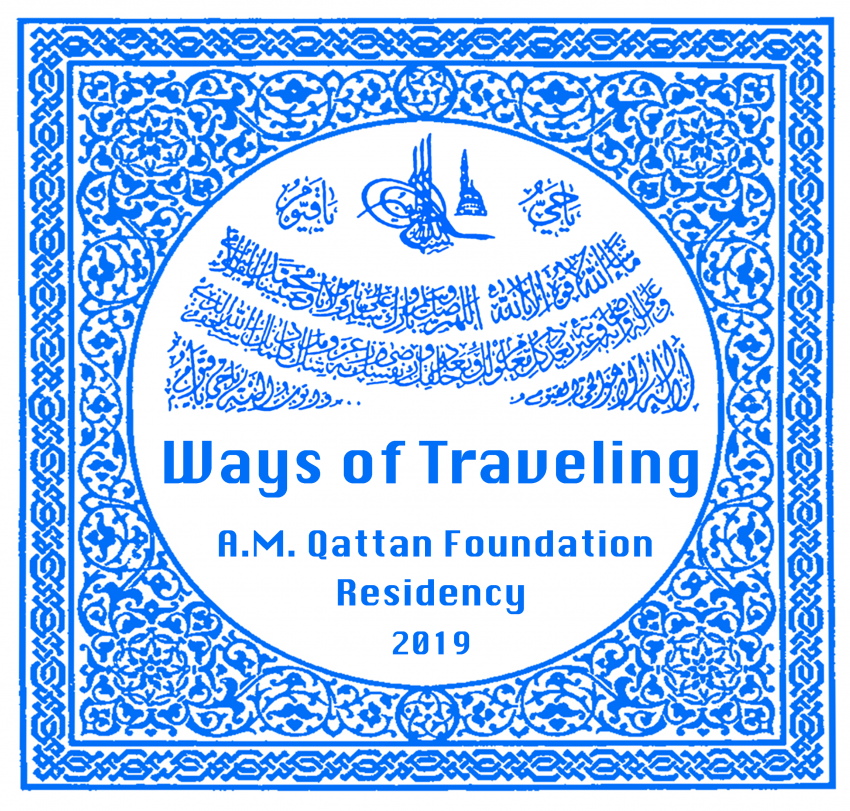
A. M. Qattan Foundation is pleased to announce the selected participants of its first programmed residency, “Ways of Traveling”, 2019. The four selected participants are: Javier Tuscano (Mexico); Marc Buchy (France); Marija Nemcenko (Lithuania) and Mateusz Sapija (Poland).
Celebrating and remembering artist, writer, poet and critic John Berger, “Ways of Traveling” improves our understanding of the relationships between the political and the aesthetic in all its forms. It aims to produce new insights and observations about politics, society, nature and culture in order to reimagine a region where time and space collapse, allowing people to come closer to each other; mountains, deserts and seas to converge; cultures to fuse; and souls to journey beyond their territorial entrapment.
The theme emerged from the rich history of locals and scholars who travelled and wrote on both the differences and similarities of the cultures they encountered. Travelers, such as Ibn Battuta, Ahmad Ibn Fadlan, Muhammad Al-Idrisi, Ahmad Ibn Majid and others used their narratives to enrich their own cultures and explore new, often critical ideas on identity, communality and individualism.
The Residency Programme consists of three interrelated parts: Critical Research and Writing; Qattan Studio; and Culture in Motion. Each of these opportunities provides a setting within which artists, curators, academics, writers, scientists and educators may engage in ongoing discussion and debate that examines the historical, social and intellectual conditions of cultural production. The duration of Residencies ranges from one to two months, in which residents will contribute with a public presentation about their work or ongoing projects.
Following an open call for the “Ways of Traveling” Residency, the Foundation received 82 applications from a number of countries, including South Africa, the UK, Spain, Mexico, Poland, USA, Germany, Italy, France, Serbia, Brazil, Egypt, Tunisia, Greece, Thailand, Russia, Lithuania, Canada, Belgium, Albania, Australia, the Czech Republic, Morocco, Saudi Arabia, Indonesia and Palestine.
Shortlisting and selection was juried by Rima Hamami, Tania Nasser, Yazid Anani and Yves Berger.
Recipients’ Projects
Mateusz Sapija (Poland)
Project Title: Palestinian Bedouins and Arabian Leopards, brings together the stories and fate of the Palestinian Bedouins and Arabian leopards, who once shared the same land, while entangling in this constellation the practice of Ahlam Shibli, a contemporary Palestinian photographer who operates in the same geographical, socio-political and contextual spectrum.
Marc Buchy (France)
Project Proposal: N2H4 is the title of the project that aims at creating a guide about Ramallah (or another city) based on local experience but also on people the artist encounters and information gathered through them. How would the locals like to present their city to foreigners? What would be the important things to know, see, experience that could help understand the spirit of their city and connect travellers to its diverse problematic?
Javier Tuscano (Mexico)
Project Proposal: Flows, Pipelines, Streams is a project that develops visual and formal research on the water politics of Israel within the West Bank and Gaza. Walks and technical explorations around the territory will be set, looking out for visual evidence on the field. On the other hand, the aim of these explorations will be to produce audio-visual images of the landscape and water infrastructure, and most importantly, stories about people and their everyday relation to water as a scarce resource.
Marija Nemcenko (Lithuania)
Project Proposal: The Migratory Nature of the White Storks is a project that aims to show a diversity of national symbols attached to the stork whilst looking for parallels between seemingly disparate cultures through the bird’s natural habitats. This migratory bird is associated with cultural identities, consequently nationalising the bird and ascribing it to a particular place. Culture, similarly to the migratory stork, is fluid and responsive to the changing historical currents, yet is often used not as a tool to connect, but as a tool to exclude.
